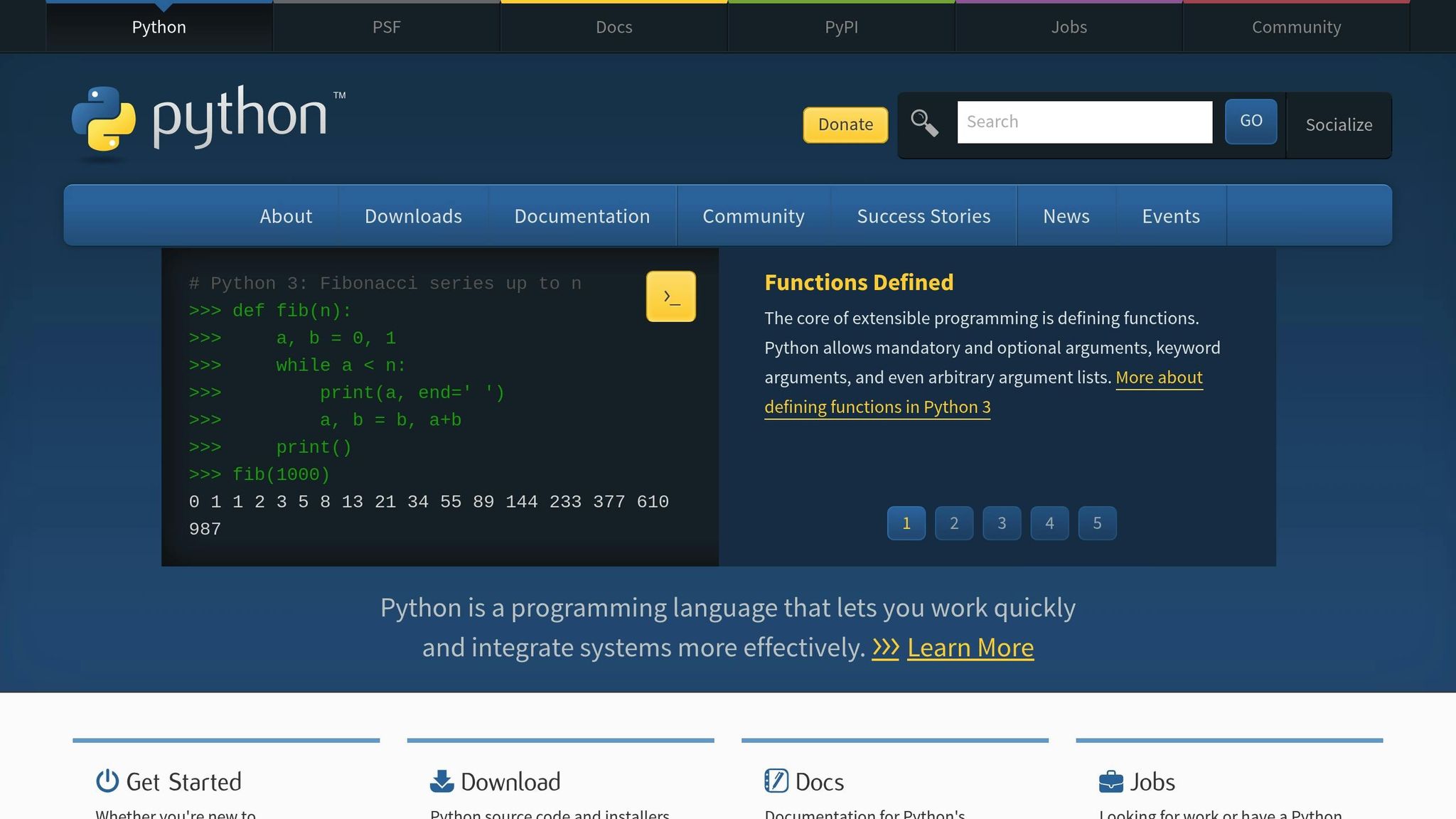When working with imbalanced datasets, the challenge lies in ensuring your model performs well on both the majority and minority classes. Imbalanced data can skew results, leading to poor predictions for underrepresented classes. This is critical in areas like fraud detection, medical diagnosis, and customer retention, where the minority class often carries higher importance.
Here’s how you can address this issue effectively:
- Preprocessing: Clean data carefully and use techniques like stratified sampling to maintain class distribution in train/test splits.
- Resampling: Apply oversampling (e.g., SMOTE) or undersampling (e.g., Tomek Links) to balance the dataset.
- Cost-Sensitive Learning: Adjust class weights or implement custom cost matrices to prioritize minority class predictions.
- Ensemble Methods: Use approaches like Balanced Random Forest or EasyEnsemble to improve predictions across all classes.
- Evaluation Metrics: Focus on precision, recall, F1 score, and AUC-PR curves instead of accuracy to better assess model performance.
Handling Imbalanced Data in machine learning classification (Python) - 2

Preprocessing Techniques for Imbalanced Data
Getting preprocessing right is the backbone of handling imbalanced datasets. Before diving into advanced methods like resampling or specialized algorithms, it’s crucial to start with clean, well-organized data that's ready for analysis. This step can be the difference between a model that misses the mark on minority classes and one that delivers consistent results across all categories. Let’s break down the essential cleaning and sampling techniques.
Data Cleaning and Feature Engineering
When working with imbalanced datasets, data cleaning becomes especially important because every minority class sample counts. In balanced datasets, losing a few samples might not matter much. But with imbalanced data, where minority class examples are already scarce, poor data quality can severely hurt performance.
Addressing missing values requires a strategic approach. For majority class samples, you might opt to discard rows with excessive missing data. However, for minority class samples, consider using imputation methods like mean, median, or mode replacement to retain these critical data points.
Feature engineering can also play a key role in improving minority class representation. By creating new features - such as interaction terms that combine existing ones - you can uncover complex patterns and relationships that might otherwise go unnoticed. This is particularly effective when you have a strong understanding of the domain and can design features that capture meaningful insights.
For text-based datasets, feature extraction techniques like Bag of Words (BoW) and Term Frequency-Inverse Document Frequency (TF-IDF) are indispensable tools. Among these, TF-IDF often outshines BoW by focusing on term importance and reducing noise. For example, research shows that combining TF-IDF with SMOTE oversampling and applying an SVM with a linear kernel resulted in a 99.57% accuracy rate. This highlights just how impactful well-thought-out feature engineering can be.
The choice of feature engineering techniques is critical. Poor decisions can lead to underwhelming results, while effective ones can highlight the characteristics of minority classes in ways that are both impactful and interpretable.
Stratified Sampling for Train/Test Splits
Random sampling often falls short when dealing with imbalanced datasets. It can result in test sets that barely include any minority class examples, skewing your evaluation process.
Stratified sampling offers a better solution by ensuring that the distribution of classes in your training and testing sets mirrors the overall dataset. For instance, if your dataset has 5% fraud cases and 95% legitimate transactions, stratified sampling ensures these proportions are preserved in both sets. This way, your model's evaluation aligns more closely with real-world scenarios.
Resampling Strategies and Model Adjustments
After preprocessing, the next step in tackling imbalanced datasets involves resampling or tweaking model penalties. The choice of method depends on your dataset, computational resources, and specific business goals. These techniques go beyond basic preparation by actively rebalancing class representation.
Oversampling and Undersampling Methods
Oversampling increases the representation of the minority class, while undersampling reduces the majority class. Both have their strengths and trade-offs, making them suitable for different scenarios.
One of the most widely used oversampling methods is SMOTE (Synthetic Minority Oversampling Technique). Instead of duplicating existing minority samples, SMOTE creates synthetic examples by interpolating between existing ones. Essentially, it generates new data points along the lines connecting minority class neighbors. This approach expands the decision boundary around the minority class, reducing the risk of overfitting. However, SMOTE works best when the minority class forms distinct clusters. If the minority data is scattered or has outliers, synthetic samples might overlap with the majority class, which could confuse the model.
Borderline-SMOTE refines this by focusing on generating synthetic samples near the decision boundary between classes. It targets minority samples close to majority class instances, producing examples in these critical borderline regions, which often leads to better results.
On the other hand, undersampling reduces the size of the majority class. Random undersampling simply removes majority samples at random, but more advanced techniques like Tomek links and Edited Nearest Neighbors strategically eliminate redundant or mislabeled majority instances. While undersampling can make models more efficient by reducing data size, it risks losing valuable information from the majority class, especially when the dataset is already small.
A combination approach often strikes the right balance. For instance, SMOTEENN combines SMOTE-based oversampling with Edited Nearest Neighbors undersampling. It first generates synthetic minority samples and then removes instances that poorly align with their neighbors, cleaning up both classes and improving overall balance.
Cost-Sensitive Learning Approaches
Cost-sensitive learning shifts the focus from altering datasets to adjusting how the model handles errors. This approach is particularly useful in scenarios where misclassifying minority class instances has higher consequences than errors involving the majority class.
Class weight adjustment is one of the simplest techniques. Many algorithms allow assigning higher weights to minority class instances to draw more attention to them. For example, in a dataset with 95% normal transactions and 5% fraudulent ones, you could assign a weight of 1.0 to normal transactions and 19.0 to fraudulent ones, effectively balancing their impact. Algorithms like Random Forest, Support Vector Machines, and Logistic Regression often support this feature.
For more precision, custom cost matrices can be used to define specific penalties for different types of misclassification. In fraud detection, for instance, missing a fraudulent transaction (false negative) might cost $1,000, while flagging a legitimate transaction as fraud (false positive) might cost only $10. A cost matrix incorporates these real-world costs into the training process, aligning the model with business priorities.
Another option is threshold adjustment, which is particularly effective with probabilistic classifiers. Instead of using the default 0.5 probability threshold for binary classification, you can adjust it based on the relative costs of errors. Lowering the threshold (e.g., to 0.3) makes the model more sensitive to the minority class, reducing false negatives but potentially increasing false positives.
Unlike resampling, cost-sensitive learning works with the original dataset distribution. This often results in models that perform better in real-world scenarios where class imbalances persist.
Ensemble Techniques for Imbalanced Data
Ensemble methods combine multiple models to enhance predictions and are particularly effective for imbalanced datasets. By leveraging diverse perspectives, these techniques often outperform single models.
Balanced Random Forest modifies the traditional Random Forest algorithm by training each tree on a balanced subset of data. It achieves this by randomly undersampling the majority class for each tree. The final prediction aggregates votes from all trees, capturing different aspects of both majority and minority classes. This approach reduces the bias toward the majority class while preserving the robustness and feature selection strengths of Random Forest.
EasyEnsemble and BalanceCascade take undersampling-based ensembles further. EasyEnsemble repeatedly creates balanced datasets by undersampling the majority class and trains a separate classifier on each subset. BalanceCascade adds an iterative twist - after training each classifier, correctly classified majority instances are removed, allowing subsequent classifiers to focus on harder-to-classify examples.
Boosting algorithms like AdaBoost also shine with imbalanced data. By focusing on misclassified instances in each iteration, boosting naturally emphasizes minority class examples. RUSBoost combines random undersampling with AdaBoost, creating balanced training sets for each boosting cycle.
Another ensemble strategy involves bagging with diverse sampling techniques. Instead of applying the same sampling method across all base models, you can train different models using various strategies - some with SMOTE, others with undersampling, and some with the original imbalanced data. This diversity often leads to more robust predictions.
The strength of ensemble methods lies in their ability to address class imbalance from multiple angles. By combining the insights of various models, ensembles produce more reliable predictions across both majority and minority classes.
sbb-itb-bec6a7e
Evaluation Metrics for Imbalanced Datasets
When working with imbalanced datasets, evaluating models accurately becomes critical, especially after applying resampling techniques. Relying solely on traditional accuracy metrics can be deceiving. For instance, a model predicting only the majority class could achieve 95% accuracy in a dataset where the minority class makes up just 5% of the data. Despite the high accuracy, such a model would fail to identify the minority class, which is often the focus.
To truly understand performance, it's essential to use metrics that evaluate how well the model performs across both classes. These metrics help determine if your resampling and adjustments are actually effective.
Precision, Recall, and F1 Score
Precision measures how many of the instances predicted as positive (minority class) are actually positive. It's calculated as:
Precision = TP / (TP + FP)
A high precision score means fewer false positives, which is crucial when acting on incorrect predictions carries a high cost.
Recall, also known as sensitivity, focuses on how many actual positive instances the model correctly identifies. Its formula is:
Recall = TP / (TP + FN)
High recall ensures that most minority class instances are detected, which is essential when missing positive cases has serious consequences.
Precision and recall are often in tension with each other. The balance between them reflects decisions about risk and resource allocation. For example, in fraud detection, recall might take precedence because missing fraudulent transactions could result in significant financial losses, even if it means reviewing more false positives. On the other hand, in medical diagnostics, precision might matter more to avoid unnecessary treatments or patient stress.
The F1 score combines precision and recall into a single metric by calculating their harmonic mean. This score highlights any imbalance between the two:
F1 Score = 2 × (Precision × Recall) / (Precision + Recall)
For a broader perspective, macro-averaging and micro-averaging can be applied. Macro-averaging calculates metrics for each class individually and then averages them, ensuring equal weight for both classes. Micro-averaging, however, pools all predictions together, often favoring the majority class.
AUC-ROC and AUC-PR Curves
The Receiver Operating Characteristic (ROC) curve plots the True Positive Rate (recall) against the False Positive Rate for various thresholds. The Area Under the Curve (AUC-ROC) condenses this information into a single number ranging from 0 to 1, where 0.5 represents random guessing and 1.0 indicates perfect classification.
However, ROC curves may overestimate performance when dealing with imbalanced datasets. A low false positive rate might make the model seem better than it is, even if it generates many false positives due to the dominance of the majority class.
Precision-Recall (PR) curves provide a clearer picture for imbalanced datasets. These curves plot precision against recall at different thresholds, focusing specifically on the minority class. The AUC-PR score summarizes the curve, with higher values indicating better performance.
PR curves are particularly helpful in visualizing how precision decreases as recall increases. For example, if your goal is to detect 80% of fraud cases, the PR curve shows the precision level you can expect at that recall rate. These curves also assist in selecting the optimal threshold for your business needs. Instead of defaulting to a 0.5 probability threshold, you can use these curves to make informed, data-driven decisions.
Balanced Accuracy and Specificity
Balanced accuracy helps address the bias toward the majority class by averaging the recall for both classes. It's calculated as:
Balanced Accuracy = (Sensitivity + Specificity) / 2
Here, sensitivity is the recall for the positive class, while specificity measures how well the model identifies true negatives:
Specificity = TN / (TN + FP)
Balanced accuracy ensures equal consideration for both classes, offering a more honest evaluation. For instance, a model with 90% overall accuracy but only 45% balanced accuracy signals poor performance on one class - something overall accuracy alone might hide.
The Matthews Correlation Coefficient (MCC) goes a step further by incorporating all four confusion matrix elements: true positives, true negatives, false positives, and false negatives. MCC ranges from -1 to +1, where +1 indicates perfect predictions, 0 suggests random guessing, and -1 reflects complete disagreement between predictions and actual outcomes.
MCC is particularly valuable for imbalanced datasets because it remains informative regardless of class proportions. Unlike metrics that can be skewed by strong performance on the majority class, MCC offers a balanced view of the model's true predictive power.
For production models, consider designing a custom scoring function tailored to your business priorities. For instance, you might assign 60% weight to recall, 30% to precision, and 10% to specificity, depending on the costs associated with different errors in your specific application.
Practical Implementation Using Python
Building on earlier strategies for resampling and evaluation, this section walks through how to implement these techniques in Python. By using imbalanced-learn and scikit-learn, you can directly apply methods to address class imbalance in machine learning tasks. The imbalanced-learn library, built on top of scikit-learn, offers tools that turn theoretical concepts into practical solutions for handling imbalanced datasets in real-world scenarios.
Step-by-Step Resampling in Python
Start by installing the required libraries:
pip install imbalanced-learn scikit-learn
Here’s how you can apply SMOTE (Synthetic Minority Oversampling Technique) to create synthetic samples for the minority class:
from imblearn.over_sampling import SMOTE
from sklearn.datasets import make_classification
from sklearn.model_selection import train_test_split
from collections import Counter
# Create an imbalanced dataset
X, y = make_classification(n_samples=1000, n_features=20,
n_informative=10, n_redundant=10,
weights=[0.9, 0.1], random_state=42)
print(f"Original dataset shape: {Counter(y)}")
# Split the data
X_train, X_test, y_train, y_test = train_test_split(X, y, test_size=0.2,
stratify=y, random_state=42)
# Apply SMOTE
smote = SMOTE(random_state=42)
X_train_smote, y_train_smote = smote.fit_resample(X_train, y_train)
print(f"After SMOTE: {Counter(y_train_smote)}")
For undersampling using Tomek Links, the following code removes overlapping samples between classes:
from imblearn.under_sampling import TomekLinks
tomek = TomekLinks()
X_train_tomek, y_train_tomek = tomek.fit_resample(X_train, y_train)
print(f"After Tomek Links: {Counter(y_train_tomek)}")
If you want to combine multiple resampling techniques, the imblearn.pipeline.Pipeline class makes it easy to chain them together while avoiding data leakage:
from imblearn.pipeline import Pipeline
from imblearn.over_sampling import SMOTE
from imblearn.under_sampling import EditedNearestNeighbours
from sklearn.ensemble import RandomForestClassifier
# Create a pipeline for oversampling and undersampling
pipeline = Pipeline([
('smote', SMOTE(random_state=42)),
('enn', EditedNearestNeighbours()),
('classifier', RandomForestClassifier(random_state=42))
])
# Fit the pipeline
pipeline.fit(X_train, y_train)
Evaluating Models With Custom Metrics
When working with imbalanced data, standard accuracy metrics may not reveal the full picture. Instead, use metrics like precision, recall, and F1 score. Start by importing the necessary functions:
from sklearn.metrics import precision_score, recall_score, f1_score, classification_report
Calculating individual metrics helps evaluate performance more thoroughly. Here’s an example using macro averaging:
from sklearn.linear_model import LogisticRegression
# Train a classifier
classifier = LogisticRegression(random_state=42)
classifier.fit(X_train_smote, y_train_smote)
# Make predictions
y_pred = classifier.predict(X_test)
# Compute metrics
precision_macro = precision_score(y_test, y_pred, average='macro')
recall_macro = recall_score(y_test, y_pred, average='macro')
f1_macro = f1_score(y_test, y_pred, average='macro')
print(f"Macro-averaged Precision: {precision_macro:.3f}")
print(f"Macro-averaged Recall: {recall_macro:.3f}")
print(f"Macro-averaged F1: {f1_macro:.3f}")
To get a detailed performance report, use the classification_report function:
from sklearn.metrics import classification_report
# Generate a classification report
report = classification_report(y_test, y_pred, target_names=['Majority', 'Minority'])
print(report)
Additionally, you can calculate the AUC-PR (Area Under the Precision-Recall Curve) for a more nuanced view of model performance:
from sklearn.metrics import average_precision_score
y_pred_proba = classifier.predict_proba(X_test)[:, 1]
auc_pr = average_precision_score(y_test, y_pred_proba)
print(f"AUC-PR Score: {auc_pr:.3f}")
For businesses with specific goals, you can design custom scoring functions to prioritize metrics like recall or precision based on their importance:
def custom_business_score(y_true, y_pred, recall_weight=0.6, precision_weight=0.3, specificity_weight=0.1):
"""Custom scoring function weighted for business priorities."""
from sklearn.metrics import recall_score, precision_score, confusion_matrix
recall = recall_score(y_true, y_pred)
precision = precision_score(y_true, y_pred)
# Calculate specificity
tn, fp, fn, tp = confusion_matrix(y_true, y_pred).ravel()
specificity = tn / (tn + fp)
# Weighted combination
score = (recall * recall_weight +
precision * precision_weight +
specificity * specificity_weight)
return score
custom_score = custom_business_score(y_test, y_pred)
print(f"Custom Business Score: {custom_score:.3f}")
Integration With Business AI Tools
To integrate these techniques into broader AI workflows, you can preprocess and export balanced data for use in specialized platforms. For example:
import pandas as pd
# Convert processed data to DataFrame
X_processed_df = pd.DataFrame(X_train_smote,
columns=[f'feature_{i}' for i in range(X_train_smote.shape[1])])
y_processed_df = pd.DataFrame(y_train_smote, columns=['target'])
# Combine and save
processed_data = pd.concat([X_processed_df, y_processed_df], axis=1)
processed_data.to_csv('balanced_training_data.csv', index=False)
For reusability, consider creating modular classes for preprocessing and evaluation:
from imblearn.over_sampling import SMOTE
from imblearn.under_sampling import TomekLinks
class ImbalancedDataProcessor:
def __init__(self, resampling_strategy='smote'):
self.resampling_strategy = resampling_strategy
self.resampler = None
def fit_resample(self, X, y):
if self.resampling_strategy == 'smote':
self.resampler = SMOTE(random_state=42)
elif self.resampling_strategy == 'tomek':
self.resampler = TomekLinks()
else:
raise ValueError("Unsupported resampling strategy")
return self.resampler.fit_resample(X, y)
def get_evaluation_metrics(self, y_true, y_pred):
from sklearn.metrics import precision_score, recall_score, confusion_matrix
precision = precision_score(y_true, y_pred, average='macro')
recall = recall_score(y_true, y_pred, average='macro')
tn, fp, fn, tp = confusion_matrix(y_true, y_pred).ravel()
specificity = tn / (tn + fp)
return {
'precision': precision,
'recall': recall,
'specificity': specificity
}
This modular approach ensures consistency and simplifies integration with AI platforms that require standardized input formats. By following these steps, you can handle class imbalance effectively while maintaining flexibility for various business applications.
Conclusion and Key Takeaways
Summary of Best Practices
Successfully managing imbalanced data calls for a combination of thoughtful preprocessing, strategic resampling, and precise model adjustments. Preprocessing ensures that your training data is both clean and representative, which involves steps like data cleaning, feature engineering, and stratified sampling to preserve class distribution across training and testing datasets.
To address imbalance effectively, consider advanced resampling techniques such as SMOTE or Tomek Links, along with cost-sensitive learning and ensemble methods. Evaluate your models using metrics tailored for imbalanced datasets. For instance, AUC-PR curves often provide a more detailed perspective than traditional ROC curves in these scenarios, and metrics like balanced accuracy ensure fair performance evaluation across all classes.
Consistently applying these techniques, as discussed earlier, is crucial for building reliable predictive models. Leveraging tools like imbalanced-learn alongside scikit-learn can help create workflows that are not only effective but also reproducible, making them easier to integrate into production systems. These strategies can immediately enhance your predictive modeling processes.
Next Steps for Businesses
To build on these strategies, businesses should take practical steps to refine their models and tackle class imbalance effectively. Start by auditing your datasets to identify imbalance issues that may be undermining the performance of your predictive models. Common examples include customer churn models, fraud detection systems, and quality control algorithms, where minority classes often go underrepresented.
Begin with straightforward solutions like stratified sampling and basic SMOTE implementation. Implementing stratified sampling during train-test splits is a quick adjustment that can yield noticeable improvements with minimal effort. Experiment with SMOTE oversampling using Python-based tools, and evaluate the impact of these changes using metrics like precision, recall, and F1 scores, which are more informative than accuracy for imbalanced data.
Shift your evaluation standards to prioritize metrics that align with imbalanced scenarios. Train your team to include AUC-PR scores alongside traditional metrics, and consider creating custom scoring functions tailored to your business goals. For instance, fraud detection might emphasize recall, while medical diagnostics may prioritize precision.
To streamline these efforts, explore specialized AI platforms designed for businesses. Tools like those available on AI for Businesses offer accessible solutions that can help small and medium-sized enterprises adopt advanced machine learning techniques without requiring deep technical expertise. These platforms can complement your team’s capabilities and speed up the deployment of balanced, high-performing models.
Finally, document your approaches and create reusable code templates. This ensures your team can replicate successes and apply these techniques efficiently to future projects.
FAQs
What’s the best way to choose a resampling technique for an imbalanced dataset?
Choosing the right resampling technique hinges on the specifics of your dataset and the goals of your predictive model. Start by assessing how imbalanced your data is and the overall dataset size. If you're working with a smaller dataset, oversampling methods like SMOTE can help by creating synthetic samples to balance the classes. On the other hand, undersampling is a good option when dealing with larger datasets and aiming to trim down overly dominant classes.
To pinpoint the best approach, rely on cross-validation and evaluate metrics such as the F1 score or recall. These can give you a clear picture of how different techniques perform. For more complex datasets, combining methods - like cleaning up noisy data before applying resampling - can yield better outcomes. Ultimately, experimenting with various strategies is essential to discover what works best for your specific scenario.
What challenges do ensemble methods face with imbalanced data, and how can you address them?
Ensemble methods are undeniably effective, but they can hit a snag when dealing with imbalanced datasets. The problem? They often lean heavily toward the majority class, which can result in poor recognition of minority classes and skewed performance metrics. On top of that, they can demand significant computational resources and may even risk overfitting if not fine-tuned properly.
To tackle these challenges, you can pair ensemble techniques with strategies designed to balance the scales. For example, SMOTE (Synthetic Minority Oversampling Technique) can generate synthetic samples for the minority class, while undersampling reduces the size of the majority class. Adjusting class weights to give more importance to the minority class is another effective option. Alternatively, cost-sensitive learning can help balance predictions by assigning higher penalties to errors involving the minority class. These methods work together to enhance detection of minority classes, reduce bias, and keep the model's overall performance on track.
What are the best evaluation metrics for assessing predictive models with imbalanced data?
When dealing with imbalanced datasets, it’s important to focus on metrics that highlight the performance of the minority class. Metrics like recall (true positive rate) and the F1 score are particularly useful because they prioritize the model's ability to correctly identify the minority class. Beyond these, the Precision-Recall Curve and its Area Under the Curve (AUPRC) can offer a more accurate representation of performance compared to accuracy, which often fails to reflect true performance in such cases.
For a more holistic assessment, you might also consider Weighted Balanced Accuracy. This metric accounts for class imbalance, offering a more nuanced view of how well the model performs across all classes. By focusing on these evaluation methods, you can better gauge your model's effectiveness, even when working with difficult, imbalanced datasets.


